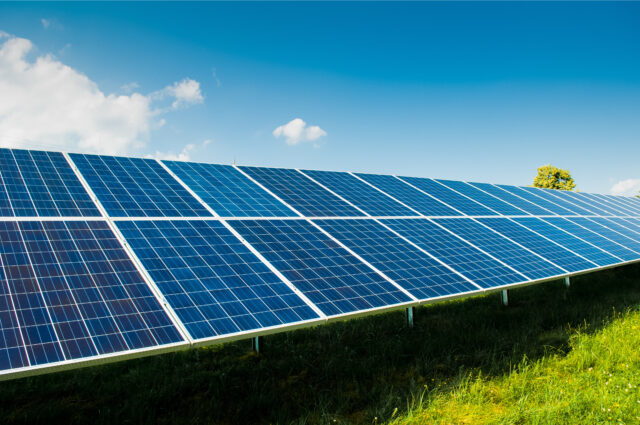Solar vs. Traditional Energy
Cost of Solar Versus Traditional Energy
While almost all people know that solar energy is a 100% renewable, sustainable energy source, many still have misconceptions about the cost of solar energy, especially when compared to traditional energy sources from fossil fuels. However, the call to move away from non-renewable energy sources has become increasingly compelling for consumers as there is scientific evidence that fossil fuel emissions are the largest contributor of atmospheric CO2 concentrations since the pre-industrial era. One misconception with the rapidly developing solar power industry is that it doesn’t make economic sense for individual consumers or for widespread national adoption. With a closer look, solar energy may make much more sense than you thought – let’s examine the costs.
Costs per Megawatt Hour
Typically, the costs of different types of energy on the market is evaluated per megawatt hour. This is because electricity is a commodity that is supplied to homes and businesses. Electricity generators need to measure the amount of energy that is supplied and used. Usage is measured in kilowatt-hours or kWh. Most rooftop solar systems produce between 250-400 watts of power in ideal conditions. Homeowners can calculate kWh by multiplying hours of direct sunlight per day x the number of watts their system produces.
Over the years, solar energy production has become more and more efficient. The cost of producing one megawatt of solar electricity in 2009 was around $350, while that same megawatt of electricity produced by coal or natural gas hovered around $100 . In 2020 the cost per megawatt hour for solar electricity has dropped to $50 dollars. In under a decade, then, solar energy has plummeted to the point that it is essentially one of the least expensive energy options on the market (only wind power, at $43 per megawatt hour, is cheaper). For homeowners, this means that renewable energy sources like solar are now a better value than non-renewable sources.
This diminishing cost of solar power is part of the reason why a recent UN report found that new solar power installations were outpacing fossil fuels around the world. The year 2017 saw 98 GW of growth in net electricity generating capacity for solar power, while coal had significant less growth at 70 GW. In 2020, the United States is on track to produce more electricity this year from renewable power than from coal for the first time ever. As the economic common sense of solar power begins to become better understood and production of solar panel technology continues to surge, increased competition from solar panel companies and the adoption of economies of scale should continue to push the price even further downwards, which is good news for homeowners looking to save money while using renewable solar energy.
A couple of years ago, the Dubai Electricity and Water Authority (DEWA) received a quote for solar energy of 2.9 cents per kWh which was also significantly less than all other bids from fossil fuel energy sources.
Payback Periods
While the cost of solar power per megawatt hour is now less than fossil fuel energy, individual homeowners might still be worried about the cost of purchasing solar panels. However, on smaller, household levels, the cost of solar panels also continues to drop. In 2020, the average cost of solar panels stood at $2.91 per watt, or $12,920 per system after tax credits. This cost of course varies on incentives by state as well as the size of solar systems needed for a home. The average homeowner needs 28-34 solar panels in order to fully offset their electricity costs. Depending on the location of a home, a larger system may be required in order to produce enough kW to cover energy needs.
In many cases, homeowners will be able to pay back their solar panels in as little as six years, though typical payback periods continue to hover around 15 years. Individuals and families looking to benefit from renewable solar energy aren’t limited to household rooftop solar panel systems. Community Solar farms are popping up around the country in states such as Illinois, New York, and Massachusetts, allowing people to receive discounted solar energy even if they cannot install solar panels on their own property.
Clearway Community Solar is one leading company that allows individuals, businesses, schools, hospitals and municipalities to have an accessible and convenient path to go solar, without panel installation on their property or having to assume any upfront costs. Besides removing the barrier of the cost of installation of private solar panel systems, Community Solar programs also guarantee savings on electricity – customers subscribe to a solar farm and pay Clearway for solar bill credits that they receive at a guaranteed monthly discount. The solar bill credits are applied to utility bills, reducing those bills.

Hidden Costs of Fossil Fuels
Lastly, it is important to mention that the true cost of relying on fossil fuels to generate electricity goes far beyond the simple cost per megawatt hour. The mining, manufacture, and burning of fossil fuels leads to an enormous ecological and social cost that is rarely taken into account. While using natural gas for electricity might supposedly make economic sense in some regions, the environmental catastrophes that come with fracking are rarely taken into consideration. Furthermore, the price per megawatt hour of burning coal for electricity doesn’t reflect the environmental externalities, such as global climate change, which could cause the US economy to shrink by 10 percent. Solar energy, on the other hand, is not only already cheaper, but stimulates the transition into a green economic future which can help to mitigate the potential economic mayhem that continued reliance on fossil fuels could cause.



